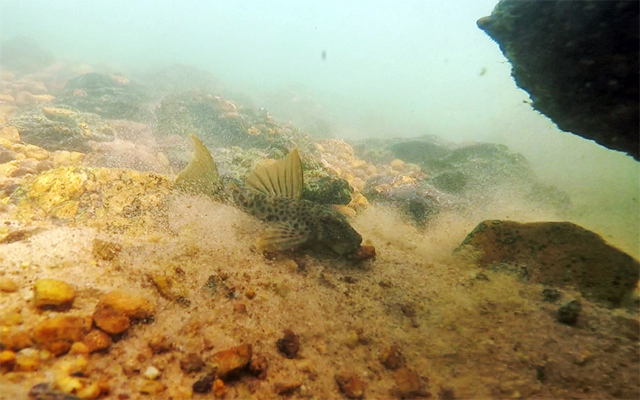| Loricariidae (Armored catfishes), subfamily: Hypostominae |
| 17.08 cm SL (male/unsexed) |
|
demersal; freshwater |
| South America: Rio Xingu basin. |
|
Dorsal spines (total): 1-1; Dorsal soft rays (total): 7-7; Anal soft rays: 5-5. Diagnosed from all species of Peckoltia by having dark thin longitudinal stripes in interradial membranes parallel to dorsal-fin rays, that fragment into small dots in larger specimens Differs from its congeners by having the following combination of characters: orange band on the distal margin of caudal- and dorsal-fin; dark brown dots on the entire body; postanal length (28.4-32.4% of SL); and head depth 48.2-60.4% of HL (Ref. 91751). |
| Occurs in shallow rapids of rivers with bottom composed of small to medium-sized flat rocks (up to 50 cm diameter), over a substrate of coarse sand and pebbles. Observed to hide under rocks during daytime and forage on epilithon on the upper surface of the rocks at night. Diatoms (83% of total volume), as well as sponge fragments and spicules associated with fine sediments and sand grains made up the stomach contents of two specimens. Mainly herbivorous, corroborated by its long intestine reaching nearly 11 times the standard length (Ref. 91751). |
|
Least Concern (LC); Date assessed: 07 November 2018 Ref. (130435)
|
| harmless |
Source and more info: www.fishbase.org. For personal, classroom, and other internal use only. Not for publication.

